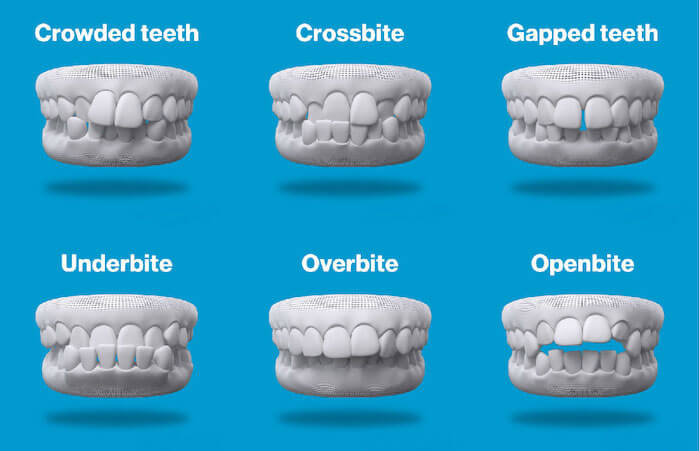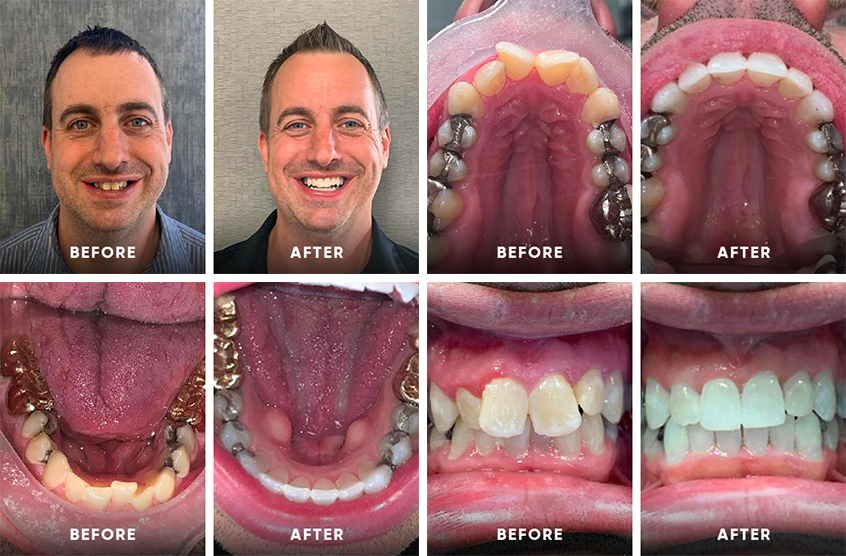Invisalign for Teenagers: A Modern Solution to Straightening Young Smiles
Invisalign for Teenagers: A Modern Solution to Straightening Young Smiles
Blog Article
Invisalign vs. Conventional Dental braces: Which Choice Is Right for You?
When thinking about orthodontic treatment, the option in between Invisalign and standard braces offers a number of important factors that merit careful assessment. Invisalign offers a discreet option with removable aligners, while conventional dental braces give an extra noticeable yet effective option for serious imbalance.
Overview of Therapy Options

On the other hand, traditional dental braces include steel brackets and wires that are adhered to the teeth. This technique applies continual pressure over time to accomplish positioning. While efficient for intricate orthodontic issues, standard dental braces call for normal check outs for adjustments and can present challenges in maintaining oral hygiene as a result of the trouble of cleansing around braces and cables.
Both alternatives have their values, and the choice frequently hinges on certain oral problems, lifestyle choices, and person conformity. Inevitably, getting in touch with an orthodontic expert is critical for identifying one of the most appropriate treatment plan tailored to individual requirements. Understanding the subtleties of each option can dramatically influence the general success of orthodontic treatment.
Visual Factors To Consider
A considerable variable affecting the selection between Invisalign and conventional braces is the aesthetic appeal each therapy provides. Invisalign aligners are crafted from clear plastic, making them essentially unnoticeable when used. This very discreet look is particularly appealing to adults and young adults that might feel uncomfortable concerning their orthodontic therapy. The capacity to preserve an all-natural smile throughout the placement process can significantly boost the person's self-confidence in social and expert settings.
On the other hand, standard braces consist of steel braces and cords, which can be much more recognizable. While advancements in orthodontic modern technology have led to the growth of smaller braces and colored elastics, conventional braces still maintain an even more obvious profile. For some individuals, the exposure of dental braces might hinder them from looking for required therapy.
Eventually, the choice between Invisalign and standard dental braces might rest on individual preferences pertaining to aesthetic appeals. People that focus on discernment often lean toward Invisalign, while those who are much less worried concerning exposure may select standard dental braces. Comprehending the aesthetic effects of each alternative is important for making an informed decision that lines up with one's way of living and preferences.
Comfort and Convenience

In terms of comfort, Invisalign aligners are removable, enabling individuals to appreciate their favorite foods without constraint and keep optimal dental health. Cleaning and flossing are streamlined, as the aligners can be gotten during these regimens, whereas traditional dental braces call for mindful steering around wires and brackets.
In comparison, standard dental braces necessitate normal modifications, making them less practical for those with active timetables. On the whole, the convenience and convenience of Invisalign make it an appealing selection for lots of individuals looking for orthodontic therapy.
Treatment Period and Performance
While both Invisalign and standard braces are efficient in fixing dental misalignments, the duration of therapy can differ substantially between both options. Typically, Invisalign treatment can take anywhere from 12 to 18 months, depending upon the intricacy of the instance. The clear aligners work by gradually shifting teeth into their desired settings, and normal follow-ups with an orthodontist help ensure progress stays on the right track.
In comparison, traditional dental braces frequently call for a longer commitment, typically look here varying from 18 months to 3 years. This is due to their fixed nature and using cables and braces, which can be extra efficient for complex instances and severe imbalances (Invisalign). The therapy effectiveness of typical braces is well-documented, as they enable exact changes and better control over tooth activity
Inevitably, the choice between Invisalign and standard braces may rest on both the anticipated therapy duration and the details oral concerns at hand. Consulting with an orthodontist is vital, as they can give tailored referrals based on individual demands, ensuring the picked method straightens with desired results and timeframes.
Price Comparison and Insurance Alternatives
Price plays a substantial duty in the decision-making procedure for people considering orthodontic treatment, whether going with Invisalign or conventional dental braces. On standard, the expense of Invisalign arrays from $3,000 to $8,000, while traditional dental braces commonly set you back in between $2,000 and $6,000. Variables affecting these expenses consist of the intricacy of the instance, the duration of treatment, and geographical location.
Insurance insurance coverage can substantially impact out-of-pocket expenses. Several oral insurance plans give partial protection for orthodontic therapies, yet the specifics can differ extensively. It is essential for patients to review their insurance coverage to figure out the extent of coverage for either alternative. Usually, typical braces may be much more regularly covered by insurance coverage plans compared to Invisalign, which some insurance firms categorize as a cosmetic treatment.
In addition, several orthodontic techniques provide flexible settlement strategies, making both treatment choices more obtainable. Clients must ask about potential funding options and price cuts for upfront repayments. Examining the complete expense, including insurance benefits and payment plans, is important for making an informed decision that lines up with both visual choices and spending plan considerations.

Conclusion
In summary, the choice between Invisalign and conventional braces hinges on numerous factors, consisting of aesthetic preferences, convenience, treatment duration, and cost. Invisalign supplies a discreet, removable alternative that helps with oral health and nutritional flexibility, while standard dental braces might be better for complicated dental issues and commonly come at a lower rate point. Ultimately, appointment with an orthodontist is necessary to assess specific situations and establish one of the most go now proper therapy choice for accomplishing ideal oral placement.
When thinking about orthodontic treatment, the choice in between Invisalign and standard braces presents several vital elements that warrant cautious the original source analysis.Contrasting Invisalign and typical dental braces discloses distinctive therapy alternatives for orthodontic correction.While both Invisalign and conventional dental braces are reliable in correcting dental imbalances, the duration of treatment can vary substantially in between the 2 alternatives.Cost plays a substantial function in the decision-making procedure for people thinking about orthodontic therapy, whether choosing for Invisalign or typical dental braces.In recap, the selection between Invisalign and typical braces hinges on multiple elements, including aesthetic preferences, comfort, therapy period, and expense.
Report this page